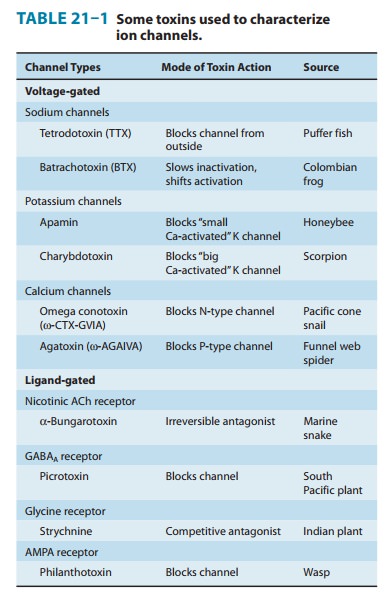Chapter: Basic & Clinical Pharmacology : Introduction to the Pharmacology of Central Nervous System (CNS) Drugs
Methods for the Study of Central Nervous System (CNS) Pharmacology
Methods for the Study of CNS
Pharmacology
Like
many areas of science, major progress in the study of CNS drugs has depended on
the development of new experimental techniques. The first detailed description
of synaptic transmission was made possible by
the invention of glass microelectrodes, which permit intracellular recording.
The development of the brain slice technique permitted an analysis of the
physiology and pharmacol-ogy of synapses. Detailed electrophysiologic studies
of the action of drugs on both voltage- and transmitter-operated channels were
further facilitated by the introduction of the patch clamp tech-nique, which
permits the recording of current through single chan-nels. Channels can be
expressed in cultured cells and the currents evoked by their activation
recorded (Figure 21–1). Histochemical, immunologic, and radioisotopic methods
have made it possible to map the distribution of specific transmitters, their
associated enzyme systems, and their receptors. Molecular cloning has had a
major impact on our understanding of CNS receptors. These tech-niques make it
possible to determine the precise molecular struc-ture of the receptors and
their associated channels. Finally, mice with mutated genes for specific
receptors or enzymes (knockout mice) can provide important information
regarding the physio-logic and pharmacologic roles of these components.

Natural Toxins: Tools For Characterizing Ion Channels
Evolution is tireless in the development of natural
toxins. A vast number of variations are possible with even a small num-ber of
amino acids in peptides, and peptides make up only one of a broad array of
toxic compounds. For example, the predatory marine snail genus Conus is estimated to include at least
500 different species. Each species kills or paralyzes its prey with a venom
that contains 50–200 different peptides or proteins. Furthermore, there is
little duplication of peptides among Conus
species. Other animals with useful toxins include snakes, frogs, spiders, bees,
wasps, and scorpions. Plant species with toxic (or therapeutic) substances are
too numerous to mention here; they are referred to in many chap-ters of this
book.
Since many toxins act on ion channels, they provide a
wealth of chemical tools for studying the function of these channels. In fact,
much of our current understanding of the properties of ion channels comes from
studies utilizing only a small per-centage of the highly potent and selective
toxins that are now available. The toxins typically target voltage-sensitive
ion channels, but a number of very useful toxins block ionotropic
neurotransmitter receptors. Table 21–1 lists some of the toxins most commonly
used in research, their mode of action, and their source.

Related Topics